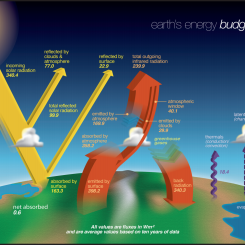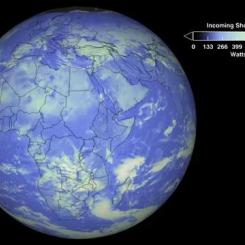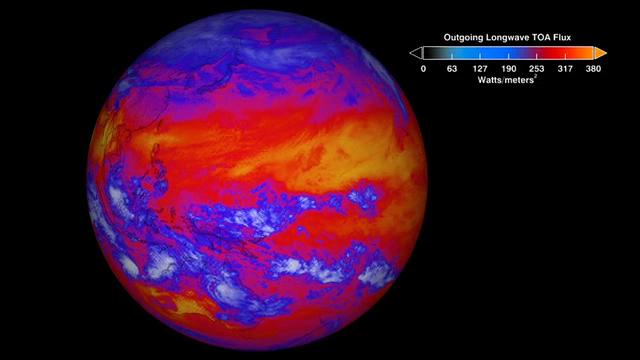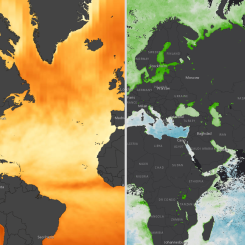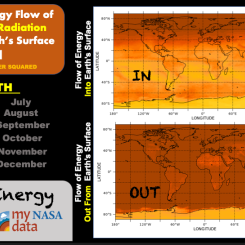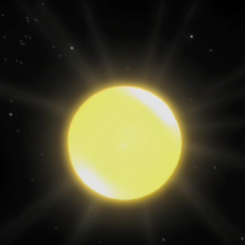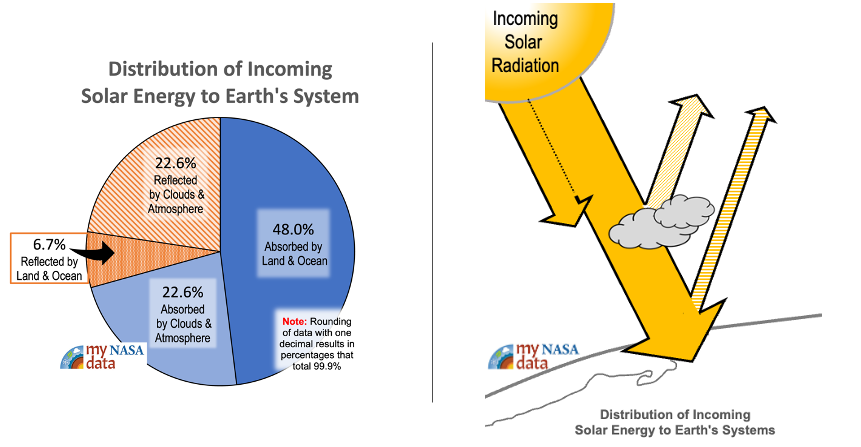Mini Lesson/Activity
Earth System Energy Travels
Overview
Students will analyze a pie chart (circle graph) showing the distribution of different parts of the Earth system's absorption and reflection of energy.
Student Directions
Overview:
This lesson is designed to help students identify where incoming solar energy goes once it enters the Earth system by analyzing a pie chart to assess relative distribution.
Once the Sun’s energy enters into the Earth System, it travels among the spheres. This pie chart (circle graph) represents all the energy coming from the Sun and where it travels along its path.
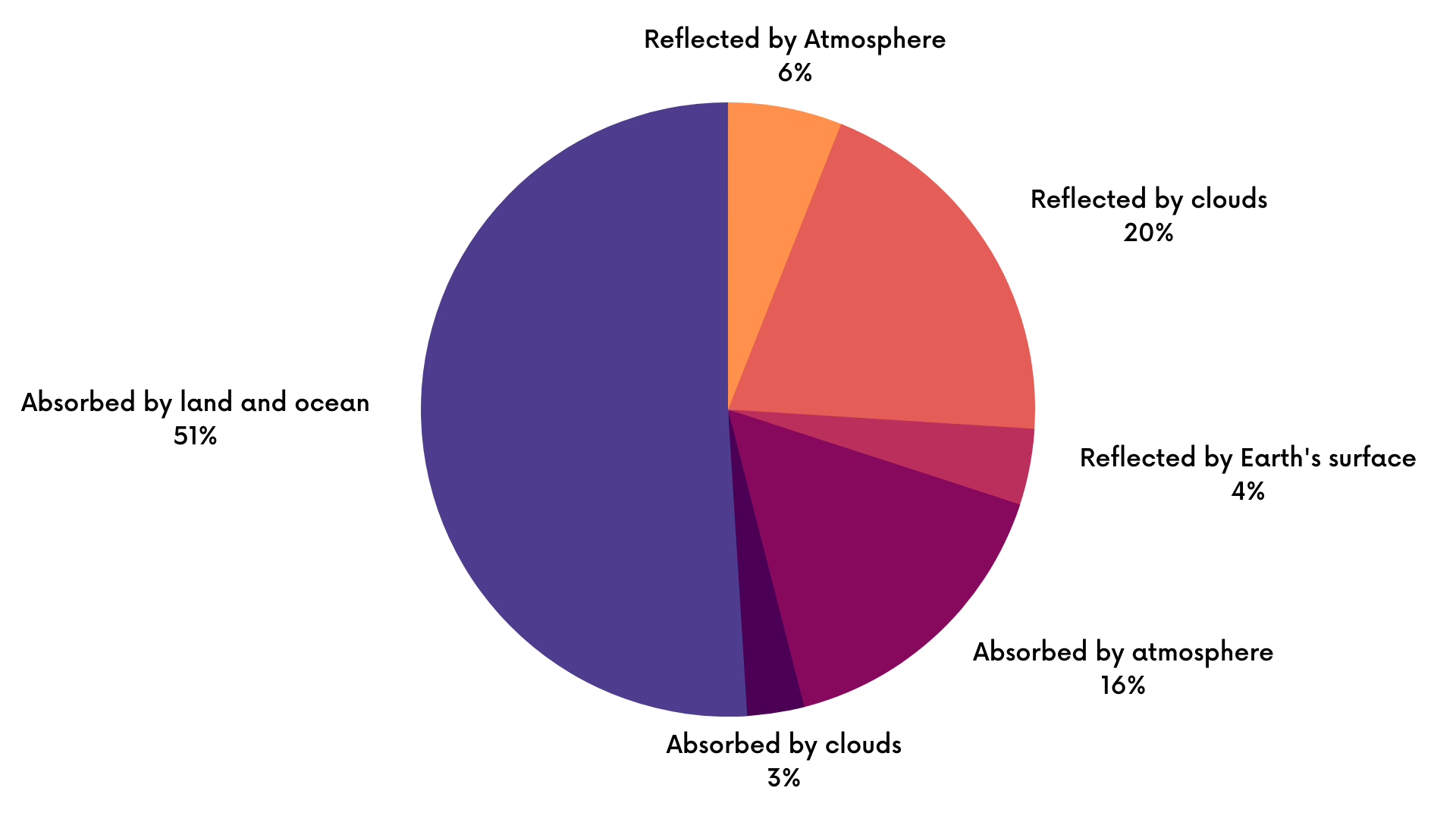
Student Directions:
Analyze the pie chart and answer the questions below.
- What can happen to the energy as it travels through the Earth system?
- Where does the largest percentage of energy go in the Earth system?
- What kinds of ways is the energy used once it enters the Earth system (i.e., Hydrosphere, Atmosphere, Biosphere, etc.)?
- What is the role of the atmosphere (including clouds) as it relates to Earth’s energy?
Teacher Note
Teachers, these mini lessons/student activities are perfect "warm up" tasks that can be used as a hook, bell ringer, exit slip, etc. They take less than a class period to complete. Learn more on the "My NASA Data What are Mini Lessons?" page.
Teachers who are interested in receiving the answer key, please complete the Teacher Key Request and Verification Form. We verify that requestors are teachers prior to sending access to the answer keys as we’ve had many students try to pass as teachers to gain access.
Disciplinary Core Ideas:
- PS4B: Electromagnetic Radiation
- ESS2A: Earth Materials and Systems
Crosscutting Concepts:
- Scale, Proportion, and Quantity
- Systems and System Models
Science and Engineering Practices:
- Developing and Using Models
- Analyzing and Interpreting Data
- Using Mathematics and Computational Thinking

